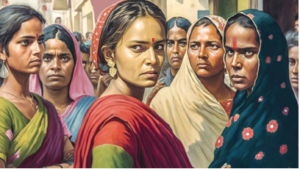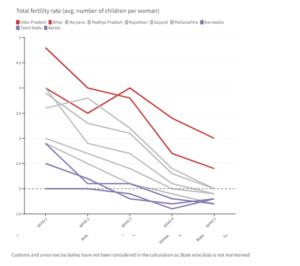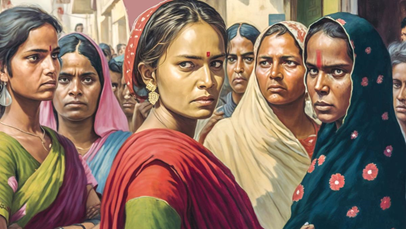
CURRENT AFFAIRS – 16/03/2023
On reservation for women in politics
What is the history behind the Women’s Reservation Bill? How was reservation for women in local bodies implemented? Why are people opposed to reserving seats for women in Parliament and State Legislative Assemblies?
The story so far: A day before her appearance in front of the Enforcement Directorate in the Delhi liquor policy case, Bharat Rashtra Samithi (BRS) leader K. Kavitha launched a six-hour hunger strike on March 10 seeking early passage of the long-pending Women’s Reservation Bill. The protest at Jantar Mantar in Delhi was inaugurated by Communist Party of India (Marxist) leader Sitaram Yechury. More than 10 parties participated in the protest, including the Samajwadi Party (SP), the Rashtriya Janata Dal (RJD) and the Rashtriya Lok Dal (RLD). The Bharatiya Janata Party said the protest was “preposterous” and termed it a ploy to change the narrative on the Delhi excise case.
What has been the history of political reservation for women?
The issue of reservation for women in politics can be traced back to the Indian national movement. In 1931, in their letter to the British Prime Minister, submitting the official memorandum jointly issued on the status of women in the new Constitution by three women’s bodies, leaders Begum Shah Nawaz and Sarojini Naidu wrote, “To seek any form of preferential treatment would be to violate the integrity of the universal demand of Indian women for absolute equality of political status.”
The issue of women’s reservation came up in Constituent Assembly debates as well, but it was rejected as being unnecessary. It was assumed that a democracy would accord representation to all groups. For instance, in 1947, noted freedom fighter Renuka Ray said, “We always held that when the men who have fought and struggled for their country’s freedom came to power, the rights and liberties of women too would be guaranteed…”. However, in the following decades, it became clear that this was not to be the case. As a consequence, women’s reservation became a recurrent theme in policy debates. For instance, the Committee of the Status of Women in India, set up in 1971, commented on the declining political representation of women in India. Though a majority within the Committee continued to be against reservation for women in legislative bodies, all of them supported reservation for women in local bodies. Slowly, many State governments began announcing reservations for women in local bodies.
The National Perspective Plan for Women recommended in 1988 that reservation be provided to women right from the level of the panchayat to that of Parliament. These recommendations paved the way for the historic enactment of the 73rd and 74th amendments to the Constitution which mandate all State governments to reserve one-third of the seats for women in Panchayati Raj Institutions and one-third of the offices of the chairperson at all levels of the Panchayati Raj Institutions, and in urban local bodies, respectively. Within these seats, one-third are reserved for Scheduled Caste/Scheduled Tribe women. Many States such as Maharashtra, Andhra Pradesh, Bihar, Chhattisgarh, Jharkhand and Kerala have made legal provisions to ensure 50% reservation for women in local bodies.
What is the Women’s Reservation Bill?
After local bodies, the next step was to ensure reservation in Parliament, but this has been a difficult fight. The Women’s Reservation Bill proposes to reserve 33% of seats in the Lok Sabha and State Legislative Assemblies for women. It was first introduced in the Lok Sabha as the 81st Amendment Bill in September 1996 by the Deve Gowda-led United Front government. The Bill failed to get the approval of the House and was referred to a joint parliamentary committee which submitted its report to the Lok Sabha in December 1996. But the Bill lapsed with the dissolution of the Lok Sabha.
In 1998, the Atal Bihari Vajpayee-led National Democratic Alliance (NDA) government reintroduced the Bill in the 12th Lok Sabha. After the Law Minister M. Thambidurai introduced it, an RJD MP went to the well of the House, grabbed the Bill and tore it to bits. The Bill failed to get support and lapsed again. The Bill was reintroduced in 1999, 2002 and 2003. Even though there was support for it within the Congress, the BJP and the Left parties, the Bill failed to receive majority votes.
In 2008, the Manmohan Singh-led United Progressive Alliance government tabled the Bill in the Rajya Sabha and it was passed with 186-1 votes on March 9, 2010. However, the Bill was never taken up for consideration in the Lok Sabha and lapsed with the dissolution of the 15th Lok Sabha. At the time, the RJD, the JD(U) and the SP were its most vocal opponents. They demanded 33% reservation for backward groups within the 33% quota for women. JD(U) leader Sharad Yadav infamously demanded to know how short-haired women could represent “our women” (women from rural areas). In 2014, the BJP promised 33% reservation for women in its manifesto and repeated the promise in its 2019 agenda. But there has been no movement from the government in this regard.
What are the arguments for the Bill?
Proponents of the Bill argue that affirmative action is imperative to better the condition of women since political parties are inherently patriarchal.
Second, despite the hopes of the leaders of the national movement, women are still under-represented in Parliament. Reservations, proponents believe, will ensure that women form a strong lobby in Parliament to fight for issues that are often ignored. There is now evidence that women as panchayat leaders have shattered social myths, been more accessible than men, controlled the stranglehold of liquor, invested substantially in public goods such as drinking water, helped other women express themselves better, reduced corruption, prioritised nutrition outcomes, and changed the development agenda at the grassroots level. Esther Duflo, Raghav Chattopadhyay et al found that in States such as West Bengal and Rajasthan, while women leaders were often rubber stamps of their husbands or fathers, they were more likely to invest in goods that were important to the interests of women. Today, India has a high percentage of crimes against women, low participation of women in the workforce, low nutrition levels and a skewed sex ratio. To address all these challenges, it is argued, we need more women in decision-making.
Third, proponents such as Brinda Karat argue that the discussion is not about a Bill alone, but about changing powerful, entrenched interests in India’s polity.
What are arguments against the Bill?
Professor Nivedita Menon writes that opponents of reservation for women argue that the idea runs counter to the principle of equality enshrined in the Constitution. They say that women will not be competing on merit if there is reservation, which could lower their status in society.
Second, women are unlike, say, a caste group, which means that they are not a homogenous community. Therefore, the same arguments made for caste-based reservation cannot be made for women.
Third, women’s interests cannot be isolated from other social, economic and political strata. Fourth, some argue that reservation of seats in Parliament would restrict the choice of voters to women candidates. This has led to suggestions of alternate methods including reservation for women in political parties and dual member constituencies (where constituencies will have two MPs, one of them being a woman). But some parties have pointed out that even these may not work as parties may field women candidates in unwinnable seats, or women may contest the elections but not get voted to power, or they may get relegated to a secondary role. Fifth, as men hold primary power as well as key positions in politics, some have even argued that bringing women into politics could destroy the “ideal family”.
How many women are in Parliament?
Only about 14% of the members in Indian Parliament are women, the highest so far. According to the Inter-Parliamentary Union, India has a fewer percentage of women in the lower House than its neighbours such as Nepal, Pakistan, Sri Lanka and Bangladesh — a dismal record.
GS Paper 2: Raj Bhavan vs Pragati Bhavan
The Telangana government moves the Supreme Court against the Governor
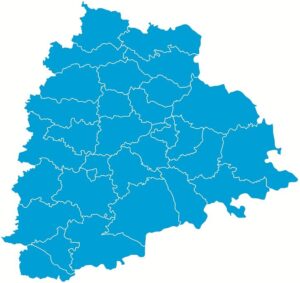
The gap between Raj Bhavan and Pragati Bhavan, the official residence-cum-camp office of Telangana Chief Minister K. Chandrasekhar Rao, continues to widen as both sides remain unrelenting on their respective stances.
Differences between Governor Tamilisai Soundararajan and Mr. Rao came to the fore yet again after the State government moved the Supreme Court, alleging that the inordinate delays in giving assent to important Bills by the Governor is leading to a constitutional impasse and also obstructing Bills passed by both Houses of the legislature in the larger public interest.
Going by her response the next day, the Governor appeared unfazed by the State Government’s move.
The Governor took to Twitter to indirectly respond to the Government’s gesture, claiming that Raj Bhavan was nearer than New Delhi (where the Supreme Court is located) and friendly official visits and interactions would have been more helpful.
She questioned the intentions of the Telangana Chief Secretary A. Santhi Kumari in not calling on her since assuming the top office.
“Assuming office as the CS, you didn’t find time to visit Raj Bhavan. No protocol. No courtesy even for a courtesy call,” the Governor tweeted.
The rift between Raj Bhavan and Pragati Bhavan started with the State government’s decision to nominate P. Kaushik Reddy to the Legislative Council in the Governor’s quota. But Dr. Tamilisai held back a resolution referred to her by the State Cabinet on the ground that she needed more time to study the proposal. The Governor justified her stand asserting that she was taking time and it was within her rights. Coupled with this was the Governor’s move to hold Praja Darbar, where she listens to the grievances of the people and refers them to the appropriate department for redressal.
Deliberate withholding’
The twin developments created fissures between the State government and Raj Bhavan to such an extent that the government had charged the Governor with deliberately withholding important Bills without giving her assent to them so that they could become legislations.
During the Budget session, there appeared to be a patch-up when Dr. Tamilisai was invited to deliver the traditional address to the joint sitting of the legislature.
But mending of ties remained elusive going by the manner in which the State government filed a petition in the apex court seeking its intervention in directing the institution of the Governor to expeditiously give her assent to the pending Bills, so that they could be implemented in letter and spirit.
The Government, in its petition in the Supreme Court, quoted Article 200 of the Constitution mandating the Governor to give assent or withhold the assent, in which case the Bill should be returned together with the message requesting that the Houses reconsider the Bill for any specified provision and would consider the desirability of introducing any such amendments as it might recommend in the message.
The Government also cited Article 163 by which the Governor was required to exercise her functions or any of them in her discretion only on the aid and advice of the Council of Ministers with the Chief Minister as its head.
“The Governor is not expected to act independently and this position has been made amply clear by the Constitution Bench of the Supreme Court in Shamsher Singh vs State of Punjab (1974)”, the Government said.
The Government, on its part, is apparently miffed over the Governor trying to act independently, even though the Constitution did not permit that. The Constitution did not envisage providing parallel administration within the State by allowing the Governor to go against the advice of the Council of Ministers.
Retired bureaucrat R.S. Praveen Kumar aptly summed up the situation saying: “Never in my known memory, have IAS officers been so badly sandwiched between two Bhavans. The Raj Bhavan is inviting and the Pragati Bhavan is insulting.”
He lamented the fact that the people were suffering on account of the persisting differences.
Given the attempts for one-upmanship between the two Constitutional offices, it is time they resolve their differences and rather focus on the public good at large.
GS Paper II: Center may consult CMs on Governor appointments
The Union government on Wednesday informed the Rajya Sabha that the practice of appointing Governors in consultation with State Chief Minister may be followed as a matter of convention.
Communist Party of India (Marxist) [CPI-M] member John Brittas had asked whether the government would consider the proposal given in Justice R. S. Sarkaria Commission Report that Governors should be appointed after consultation with the Chief Minister of the respective States.
He also asked whether the government will amend Article 155 of the Constitution to incorporate the suggestion.
Responding to the questions, Minister of State for Home Nityanand Rai said in a written reply in the Rajya Sabha, “The government is of the view that the practice of consultation with State Chief Minister may be followed as a matter of convention, and there does not appear any need to amend Article 155 of the Constitution.”
GS Paper II & III: Friction over formula: why some states get more from centre
With population given a higher weightage over performance, the revenue-sharing formula has created friction between States and the Centre
For every one rupee that Tamil Nadu gives the Centre, it gets back 29 paise. On the other hand, Uttar Pradesh gets ₹2.73, and Bihar gets back ₹7.06, as shown in Chart 1.
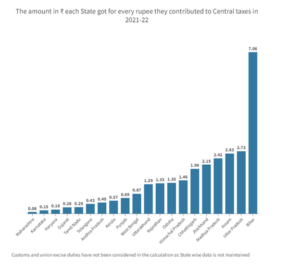
The Centre’s tax collections are pooled-in from States and a part of it is distributed among them, based on the Finance Commission’s (FC) formula. The Fifteenth Finance Commission’s (XVFC) formula is skewed in favour of some States, resulting in wide inter-State variations. As population is given a higher weightage, it tilts the balance in favour of some northern States. This has been a bone of contention between the Centre and the affected States.
Tamil Nadu’s Finance Minister P.T.R. Palanivel Thiagarajan, in a discussion with Congress leader Shashi Tharoor, said, “The notion to allocate funds based on the population, it rewards those who have not been able to achieve population control.”
The Centre, on the other hand, has been defensive. In an event in Chennai, Union Finance Minister Nirmala Sitharaman said, “If every State thinks I am giving so much, I should get so much, it’s just not going to work out… Will a country prosper if it constantly draws this artificial line?”
The XVFC had arrived at the States’ share in the divisible pool of taxes based on each State’s needs (population, area and forest and ecology), equity (per capita income difference) and performance (own tax revenue and lower fertility rate). The weight assigned to needs was 40%, equity 45%, and 15% for performance. This formula meant that Uttar Pradesh and Bihar got 17.9% and 10%, respectively in the XVFC. Karnataka, Kerala and Tamil Nadu got 3.65%, 1.93% and 4.08%, respectively. Chart 2 shows that in successive FCs, the share of southern States has seen a consistent decline.
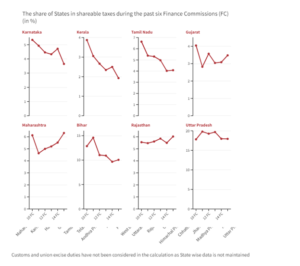
Notably, the XVFC introduced the fertility rate in the formula to reward States which had reduced the fertility levels. While this does favour the developed States which have pushed their TFR below replacement rate as shown in chart 3, the weightage given to the component is relatively lower than equity and need.
Govinda Rao, a member of the 14th Finance Commission, defended the formula. “The objective is not to return the money you get from a State. Transfers enable a State to provide comparable levels of services. The basic rationale is horizontal equity. Taxes accrued to Tamil Nadu are not necessarily from the State. Yes, per capita income levels increased substantially in Karnataka, Kerala and Tamil Nadu. Now, the increase need not necessarily have to do only with the States’ efforts.”
A senior economist from Tamil Nadu differed. “The southern States have grown faster, and contribute larger revenue to the central kitty. We don’t say that if U.P. gets one rupee for every 10 paise it contributes, Tamil Nadu should also get the same. We are not against equity but that should not adversely impact our efficiency. So, if developing States are not incentivised to generate more tax revenue, how will the Centre then redistribute it?”
Moreover, in the discussion with Mr. Tharoor, Mr. Thiagarajan argues that he is “concerned about what happens to all the money that goes to poorer States. Why is it not leading to development? It’s not the money that we begrudge, it’s the lack of progress, it’s like throwing money down the well.”
Chart 4 (State-wise Human Development Index) and chart 5 (State-wise per capita NSDP) depicts this trend where States which get more money from the Centre show sedate growth, and the progress of those who get less is relatively much superior.

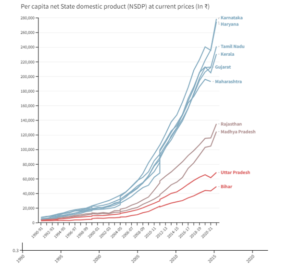
GS Paper II and III: House panel questions huge cut in outlay for MGNREGS
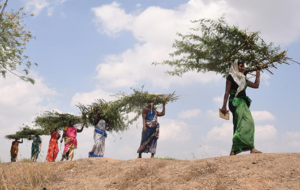
Taking note of the drastic cut in allocation for the Mahatma Gandhi National Rural Employment Generation Scheme (MGNREGS) in the Union Budget, the Parliamentary Standing Committee on Rural Development, in a report tabled on Wednesday, questioned the government’s rationale behind the reduction in the allocation for the scheme considering the key role it plays for the distressed populace of the country.
The Budget Estimate for the MGNREGS was reduced by ₹29,400 crore for the 2023-24 fiscal year compared with the Revised Estimate of 2022-23.
“It is a last resort of succour for the jobless section who don’t have any other means to feed them and their family members. The role and importance of MGNREGA was visible during the corona pandemic times when it acted as a ray of hope for the needy in times of distress,” the committee headed by DMK MP K. Kanimozhi said in the report.
The importance of the scheme is highlighted by the fact that during the pandemic, the government had to revise the budget from ₹61,500 croreinitially allotted in 2020-21 to ₹1,11,500 crore and similarly in 2021-22, it was hiked from ₹73,000 crore to ₹99, 117.53 crore.
Even in the ongoing financial year, ₹73,000 crore was initially allocated to the scheme, but it was increased to ₹89,400 crore.
“The Committee is unable to comprehend the rationale for reduced allocation of fund under MGNREGA,” the report noted.
The panel also expressed distress over the delay in wage payments and material fund release to the State governments.
It further flagged a chronic problem of non-adherence to the provision of delay compensation, which several activists and organisations working in the field have repeatedly pointed out. The Mahatma Gandhi National Rural Employment Guarantee Act (MGNREGA) says that wages have to paid within 15 days of the work and in case of any delay, the workers must be paid due compensation.
“In this context, the Committee, through their experiences of ground reality and the facts and figures apprised to them during study visits are seized of the situation that the state machinery has time and again failed in providing the delay compensation due to being late in the payment of wages to the beneficiaries.”
Reacting to complaints from the ground against digital capturing of attendance of the workers through the National Mobile Monitoring System, a mobile based application, the committee said that while it understood the reason for bringing in this innovation, the government should also be aware of the problems faced by the workers.
“Needless to say that the MGNREGA beneficiaries belong to extremely deprived sections of the society, belonging to different linguistic milieu. Expecting the MGNREGA workers to be well versed with the functioning and language of app or for that matter even depending upon a nodal human intervention perhaps adds to their woes,” the panel said.
The patchy Internet connectivity in many regions is also a live issue that the government cannot ignore while universally implementing the idea, the committee said.
GS Paper II: Two years to shift to new minimum age of marriage
The increase in minimum age of marriage for women to 21 years as provisioned in the Prohibition of Child Marriage Amendment Bill, 2021, would come into effect two years after the Bill is notified following its passage in Parliament, the government said on Wednesday. This gap would provide ample time to citizens to prepare for this “momentous” reform, it added.
The Bill, currently with the Parliamentary Standing Committee, envisions making the age of marriage of women at par with men.
It has provisions to make consequential amendments relating to age of marriage in The Indian Christian Marriage Act, 1872; The Parsi Marriage and Divorce Act, 1936; The Muslim Personal Law (Shariat) Application Act, 1937; The Special Marriage Act, 1954; The Hindu Marriage Act, 1955; and The Foreign Marriage Act, 1969, the Ministry of Women and Child Development informed the Rajya Sabha.
The Ministry said that the task force which had been constituted before the introduction of the Bill in Parliament had examined the correlation of age of marriage and motherhood and some other related aspects as well.
GS Paper II: NCBC works with just two appointees: Centre in RS
The Union government on Wednesday said that it had appointed just a chairperson and one member to the National Commission for Backward Classes (NCBC), in response to a Rajya Sabha question, asking why the Commission was yet to have a vice-chairperson and members.
The current chairperson for the NCBC, Hansraj Gangaram Ahir, was appointed by the President in November 2022, after months of the Commission functioning without a chief.
In response to the question from Tamil Nadu MP Anbumani Ramadoss, the Minister of State for Social Justice and Empowerment, A. Narayanaswamy said that in addition to Mr. Ahir, one member had been appointed – Bhuvan Bhushan Kamal.
He added in the response, “The chairperson, vice-chairperson, and other members of the National Commission for Backward Classes (NCBC) are appointed as per provisions of Article 338-B of the Constitution.”
However, as per Article 338-B of the Constitution, which provided for the constitution of the NCBC, “Subject to the provisions of any law made in this behalf by Parliament, the Commission shall consist of a chairperson, vice-chairperson and three other members.”
GS Paper II: Current procedure for inclusion on ST list adequate: govt.
The Tribal Affairs Ministry on March 15 insisted once again that the current procedure for inclusion of communities in the Scheduled Tribes list was “adequate”. It was responding to a question in the Rajya Sabha, which raised concerns about the need for a revision in the criteria and procedure for inclusion in the list.
According to the modalities for inclusion first framed in 1999, the proposal for inclusion must originate from the respective State or Union Territory government. Following this, the proposal is sent to the Union Tribal Affairs Ministry, which sends it to the Office of the Registrar General of India (ORGI). If the ORGI approves the inclusion, the proposal is forwarded to the National Commission for Scheduled Tribes.
Only after the concurrence of these institutions, will the proposal go forward to the Cabinet to bring in the appropriate amendment to the Constitution (Scheduled Tribes) Order, 1950.
In response to a question from Biju Janata Dal MP Muzibulla Khan, the government said, “These modalities are adequate for consideration of proposals for inclusion of communities in the list of Scheduled Tribes of a State/UT.”
In response to an RTI query from The Hindu, the ORGI had said in January, 2022 that it continues to follow the criteria set out by the Lokur Committee in 1965 to decide whether a community can be included in the ST list. These criteria include: indications of primitive traits, distinctive culture, geographical isolation, shyness of contact with the community at large, and backwardness.
Both the procedure and criteria for inclusion of communities had been strongly criticised by an internal government task force formed in February 2014, for being “obsolete”, “condescending”, “dogmatic” and “rigid”.
GS Paper II: Can practice, but not appear in court:what changes for foreign law firms
Apurva Vishwanath
In a move that could change the landscape of legal practice in the country, the Bar Council of India (BCI) has allowed foreign lawyers and law firms to practice in India. Although they cannot appear in court, they can work for clients on foreign law and corporate transactions.
What was the decision of the Bar Council?
On March 13, the Bar Council notified the Rules for Registration and Regulation of Foreign Advocates and Foreign Law Firms in India, 2022 in the Official Gazette.
Also Read: What are the details of anticipatory bail granted to Karnataka BJP MLA in corruption case?
The Bar Council is a statutory body established under the Advocates Act, 1961 and regulates the practice of law and legal education in India. For more than a decade, the Bar Council has opposed allowing foreign law firms in India.
Now, the Bar Council has justified its move by addressing concerns over the flow of FDI into the country and making India a hub for international trade arbitration. These provisions bring legal clarity to foreign legal entities, which currently have very limited operations in India.
In a lengthy statement of objects and reasons, the Bar Council said, “The Bar Council has decided to implement these rules to enable foreign lawyers and foreign law firms to practice foreign law and various international law and international arbitration matters in India in a well-defined, regulated and controlled manner based on the principle of reciprocity.”
What do the new rules allow?
As per the Advocates Act, only advocates registered with the Bar Council are eligible to practice as advocates in India. All others, such as litigants, can appear only with the permission of the court, authority or person pending trial.
The current notification basically allows foreign lawyers and law firms to register with the Bar Council to practice in India if they are eligible to practice law in their home countries. However, they cannot enforce Indian law.
“Foreign lawyers or foreign law firms shall not be permitted to appear before Indian courts, tribunals or other statutory or regulatory authorities.”
They will be allowed to practice transactional work/corporate work like joint ventures, mergers and acquisitions, intellectual property matters, drafting of contracts and other related matters on a reciprocal basis.
They will not be allowed to engage in or do any work related to transfer of property, legal investigation or other similar work, the notification said.
Indian lawyers working with foreign law firms are also subject to the same restrictions as only engaging in “non-litigation practice”.
How have foreign law firms fared so far?
The issue of foreign legal entities entering the Indian market came to court in 2009 with a challenge in the Bombay High Court. In the case of ‘Lawyers’ Federation v Union of India’, the Bombay High Court basically held that only Indians with Indian law degrees can practice law in India.
The High Court interpreted Section 29 of the Advocates Act, which states that only advocates registered with the Bar Council can practice law. The High Court also held that ‘practice’ includes litigation and non-litigation proceedings, so foreign firms cannot advise their clients in India or appear in court.
In 2012, ‘A.K. In the case of ‘Balaji v. Union of India’, a similar issue came up in the Madras High Court.
In 2015, the Supreme Court in a judgment recognized the practice of foreign legal entities in a more narrow sense. Foreign firms cannot practice in litigation or non-litigation unless they fulfill the requirements and rules laid down by the Advocates Act and the Bar Council Rules ‘A.K. Madras High Court said in the case of Balaji v. Government of India. 32 foreign law firms from the UK, US, France and Australia were named as defendants in the case. However, the Madras High Court made an exception. The Court held that there would be no bar to occasional visits or advising clients on a “fly in and fly out” basis.
“There is no prohibition in law or rules for foreign law firms or foreign lawyers to come to India for a temporary period on a “fly in and fly out” basis to provide legal advice to their clients in India on foreign law or their own legal system and various international legal issues. “Furthermore, having regard to the concept and purpose of International Commercial Arbitration introduced by the Arbitration and Conciliation Act, 1996, foreign lawyers cannot be prevented from coming to India and conducting arbitration proceedings in respect of disputes arising out of contracts relating to international trade,” the High Court said.
By 2012, Business Process Outsourcing (BPOs) had come to India on a large scale to provide back-end work to US-based companies. In the legal profession, these firms have undertaken legal process outsourcing (LPOs), support activities for lawyers. They operated in an uncertain legal framework and the Supreme Court had to intervene to settle the law on the issue.
What was the decision of the Supreme Court?
Both the Madras and Bombay High Court judgments were challenged in the Supreme Court by the Bar Council and the Bar Association respectively. In 2018, the Supreme Court upheld both High Court rulings disallowing foreign law firms and lawyers, with some modifications such as the phrase “occasional visitation” being “not for routine visitation.”
This means that “occasional visits” does not mean regular visits. On the issue of LPOs, the Supreme Court has not decided their fate. They argued that they are mainly BPOs that manage secretarial support, transcription services, proofreading services, travel desk support services, etc. These do not technically come under the ambit of the Advocates Act or the rules of the Bar Council.
GS Paper II: Resolution introduced in U.S. Senete on McMahon Line
A resolution has been introduced in the United States Senate to recognise the McMahon Line as the international boundary between China and Arunachal Pradesh. The bipartisan Senate resolution sees Arunachal Pradesh as an integral part of India.
“At a time when China continues to pose grave and gathering threats to the Free and Open Indo-Pacific, it is critical for the United States to stand shoulder-to-shoulder with our strategic partners in the region, especially India,” Senator Bill Hagerty, who along with Senator Jeff Merkley introduced a resolution in the Senate.
GS Paper II: US Senate confirms Eric Garcetti as envoy to india
The US Senate on Wednesday confirmed President Joe Biden’s close aide Eric Garcetti as the country’s next ambassador to India. With the development, 52-year-old Garcetti will now fill in the key diplomatic position that had been vacant for more than two years.
Garcetti’s nomination was confirmed via a 52-42 vote.
The former Los Angeles mayor’s nomination was pending before the US Congress since July 2021, when he was nominated for the prestigious diplomatic posting by Biden.
President Biden believes that the US has a crucial and consequential partnership with India and that Garcetti will make a strong and effective Ambassador, Olivia Dalton, Principal Deputy Press Secretary, told PTI. “The President thanks Chairman Menendez and Senators on both sides of the aisle for their thorough consideration and for today’s bipartisan vote to confirm Mayor Garcetti,” Dalton said.
Last week, the Senate Foreign Relations Committee voted 13-8 in favour of his nomination.
“The relationship between India and the US is a strong one, and one of great strategic, economic, and cultural importance. Founded on shared values, supported by growing economic and trade ties, and strengthened by the Indian diaspora here in the US, this partnership continues to hold significant promise for the future,” Senator Mark Warner, Co-Chair of Senate India Caucus, said.
His nomination was not brought to the Senate floor for a vote during the last Congress as the ruling Democratic Party did not have enough support to get the close aide of Biden through.
GS Paper III: Exports fall 8.8% trade deficit shrinks over 7%
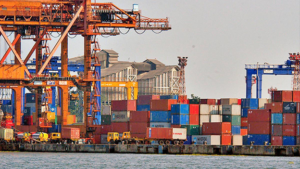
Tentative global demand pulled India’s goods exports down 8.8% in February to $33.9 billion, while imports fell 8.2% from a year ago to $51.31 billion, according to Commerce Ministry estimates released on Wednesday. This is the third time in five months that merchandise exports have contracted, following an 11.6% drop in October 2022 and a 3% fall in December 2022.
Outbound shipments’ value dropped for as many as 16 of India’s top 30 export items in February, with 14 of them recording close to or higher than double digit declines. This included a 9.7% dip in engineering exports, which have been a bulwark of India’s exports in recent years.
The merchandise trade deficit during February 2023 fell 7% to $17.43 billion, slightly higher than January’s $16.56 billion deficit, which in turn was the lowest in at least 18 months. The first two months of 2023 have now clocked a sharply lower average deficit than seen through all of 2022, when the monthly deficit hit a record $29.23 billion in September.
Oil exports fall
“While both oil and non-oil exports contracted, oil exports fell sharply by 28.8%, while imports went below the $52 billion-mark, a level not seen for almost a year,” said CareEdge Ratings chief economist Rajani Sinha.
Although gold imports dropped almost 45% from February 2022 levels to $2.63 billion, this constituted a 277% month-on-month jump from January’s imports of the yellow metal.
GS Paper III: Trade policy may be revised after eight years from April 1
The much-delayed reboot of India’s Foreign Trade Policy, which has been unchanged since 2015 and whose revision has been due for three years, may finally be announced by the end of this month, Commerce Secretary Sunil Barthwal said.
Last September, the Commerce Ministry had planned to announce a new trade policy but abandoned those plans and extended the ‘Foreign Trade Policy 2015-20’ by six more months till March 31.
“During these six months, we have looked at various aspects of that policy and undertaken a visioning exercise, keeping our aspirations to achieve $1 trillion of merchandise and services exports each,” Mr. Barthwal said. “So within that framework, we have worked out the Foreign Trade Policy and we are expecting that it would be released by the end of the month,” he added.
Pointing to the decline in India’s goods import bill in the last couple of months, the Secretary said this was a reflection of efforts steered by Commerce and Industry Minister Piyush Goyal to contain unnecessary imports.
“We have been working with all ministries and have shared the import figures for each product to examine if they are essential and non-essential imports. If a generic drug needs an active pharmaceutical ingredient from China, it is essential,” Mr. Barthwal explained, adding that it is also being examined if there is adequate domestic manufacturing capacity to substitute imports.
“But it will depend on the global supply chain links too. Price differential also has to be seen,” he said, adding that the ministries have been urged to discourage imports where possible once they analyse their necessity.
GS Paper III: Govt appoints ex-RBI official Mohanty as PFRDA Chairman
The government has appointed Deepak Mohanty, former Reserve Bank official, as the Chairperson of the Pension Fund Regulatory & Development Authority (PFRDA).
Mohanty will hold this post from the date of assumption of charge till attaining the age of 65 years or until further orders, whichever is earlier, according to an order issued by the Department of Financial Services (DFS), Finance Ministry.
Supratim Bandyopadhyay’s tenure as PFRDA Chairman ended in January. PFRDA’s total assets under management were Rs 8.81 lakh crore as on March 4, 2023.
Prior to this, Mohanty was the Whole-Time Member (Economics) of PFRDA for two years overseeing areas of development and regulation of pension funds.
PFRDA regulates the National Pension System (NPS), subscribed by employees of the Central government, State governments and by employees of private institutions, organizations and unorganised sectors.
He was an Executive Director at the Reserve Bank of India (RBI) overseeing areas of enforcement of banking regulation, risk management, internal audit and inspection, financial stability, monetary policy, economic research and statistics. He had also worked as Senior Adviser at the International Monetary Fund (IMF).
He also held various positions in economic research and was Head of the Monetary Policy Department in the RBI.
GS Paper II and III: ‘States identified for PM textile scheme to be named soon’
The Ministry of Textiles will shortly name the States identified for implementation of Prime Minister MITRA (Mega Integrated Textile Region and Apparel) scheme, Union Minister of Textiles Piyush Goyal said on Wednesday.
Inaugurating a three-day Global Textile Conclave, organised by Confederation of Indian Textile Industry, the Minister said the States are identified through the challenge route and the PM MITRA parks will provide the best eco system for the textile industry to be collectively present in one location, with plug-and-play infrastructure, and improve the competitiveness of the textile value chain. It will also give boost to the five F (farm, fibre, factory, fashion, foreign) vision of the Prime Minister.
Listing the schemes implemented by the Ministry for the textile industry, he said recently an additional amount of ₹500 crore was allocated for the Scheme for Rebate of State and Central Taxes and Levies on Export of Garments and Made-ups (RoSCTL) from the Remission of Duties and Taxes on Exported Products (RoDTEP) scheme.
The vision for 2030 is to achieve economic value of $250 billion in production and $100 billion in export of textiles, apparel, and related products and this is achievable though the industry faced a small set back in the current year, he said.
Mr. Goyal also urged the industry to focus on sustainability and circular economy.
